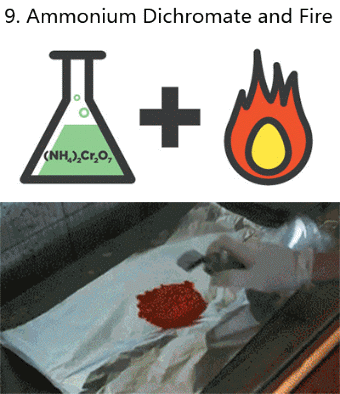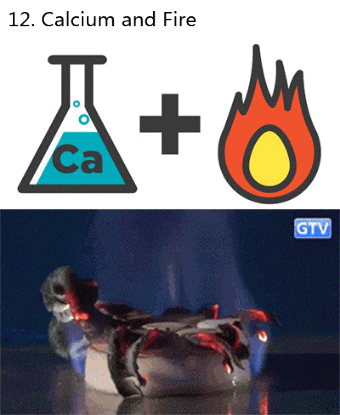Seer Of Seers Sage Of Sages Prognosticator Of Prognosticators Weather Prophet Extraordinary
Seer of Seers Sage of Sages Prognosticator of Prognosticators Weather Prophet Extraordinary
So reads the official title of Punxsutawney Phil, the world’s most famous weather-predicting groundhog/woodchuck/marmot/whistle pig (yes, they are, in fact, all the same animal… surprises abound in the world of meteorological mammals).
Phil hails from the town of Punxsutawney, PA, where every year on February 2, a group of grown men sporting top hats and waxed mustaches pull him out of a box and ask him when winter will end. I can never keep straight whether seeing the shadow means spring will come early or if we’ll have a long winter, but this doesn’t really matter, since rodents are not good weather prediction tools.

Despite being about as reliable as a coin flip, Phil is joined in this annual tradition by more than a dozen North American groundhogs like Shubenecadie Sam, General Beauregard Lee, and Wisconson’s humbly-named Jimmy the Groundhog, seen here:

Surprise! Groundhogs can bite! And I would too, if you forcibly removed me from my warm, comfy house, held me aloft in the frigid air in front of thousands of gaping onlookers and flashing lights and asked me about a subject in which I have no expertise.

Rodents might not be real educated in the fields of meteorology and astronomy, but humans are! We’ve got Earth’s orbital mechanics and their corresponding effect on annual temperature cycles down to a literal science. We smart. Just look…

I dug into the science of seasons this week, and I discovered that our system of defining “winter” and “summer” and “spring” and “autumn”, at least the way that most of us non-meteorologists think of them, doesn’t really make sense when you compare it to the weather.

You might already know that we define “winter” or “summer” based on Earth’s position in relation to the sun, namely the solstices. This makes the seasons easy to keep track of, but for most of us these dates are unreliable, illogical, and remarkably disconnected from the actual weather. The little boxes on your calendar that say “First Day of Winter”, “First Day of Spring” and so on don’t line up very well with how cold or hot it is outside.
Unfortunately, that’s what happens when you try to apply a single calendar to an entire planet… could there be a better way?
You can learn the rest of the story by watching this week’s It’s Okay To Be Smart up at the top of this post. Enjoy!

More Posts from Drunkscience4u and Others
Did you hear about the wooden statue that crashed a train
It was a bad conductor

It's been a while, right?? Well, it's been an interesting year. We're in the process of uploading all the episodes to vimeo. The first trailer is up. Go check it out again! Episodes are up weekly starting February 5. If you really want to help us out, please donate to http://ift.tt/2lqvuCQ #drunkscience #vimeo #webseries #science http://ift.tt/2FNIWrk

thefactsworld:Pure Vanilla extract has at least 35% alcohol in… http://ift.tt/2jyvRJO

Mole-cool
Six Things You Don’t Know About Snow

FACT #1: Snow covers 30 percent of land on Earth.

FACT #2: More than 1.2 billion people rely on melt from snowpack and glaciers.

FACT #3: Snowmelt is the main source of water for 60 million Americans.

FACT #4: Since 1967, 1 million square miles of spring snow cover has disappeared from the Northern Hemisphere – an area the size of the southwestern U.S.

FACT #5: 70 percent of water from the snow-fed San Joaquin River irrigates California’s Central Valley.

FACT #6: NASA’s Global Precipitation Measurement mission observes falling snow, even at the tops of hurricanes.

Measuring how much water is in a snowpack is not easy. Scientists are investigating the best combination of sensors for different terrains. More accurate snow measurements will help scientists and decision makers better understand our world’s water supply and better predict floods and droughts.

To follow scientists in the field studying snow, follow #SnowEx on Twitter and Facebook
-
 loraxyaoi liked this · 2 years ago
loraxyaoi liked this · 2 years ago -
 queeer-chaos liked this · 3 years ago
queeer-chaos liked this · 3 years ago -
 maeganbobaegan liked this · 3 years ago
maeganbobaegan liked this · 3 years ago -
 heysoijust reblogged this · 4 years ago
heysoijust reblogged this · 4 years ago -
 heysoijust liked this · 4 years ago
heysoijust liked this · 4 years ago -
 knotformation liked this · 6 years ago
knotformation liked this · 6 years ago -
 vtman2016 liked this · 6 years ago
vtman2016 liked this · 6 years ago -
 awesome--fangirl liked this · 6 years ago
awesome--fangirl liked this · 6 years ago -
 imagesandinspirations reblogged this · 6 years ago
imagesandinspirations reblogged this · 6 years ago -
 kabre liked this · 6 years ago
kabre liked this · 6 years ago -
 aawndrey liked this · 7 years ago
aawndrey liked this · 7 years ago -
 ngavan reblogged this · 7 years ago
ngavan reblogged this · 7 years ago -
 ngavan liked this · 7 years ago
ngavan liked this · 7 years ago -
 rai-knightshade liked this · 7 years ago
rai-knightshade liked this · 7 years ago -
 sleepoverbyhayleykiyokomp3-blog liked this · 7 years ago
sleepoverbyhayleykiyokomp3-blog liked this · 7 years ago -
 thomasmoore35715 liked this · 7 years ago
thomasmoore35715 liked this · 7 years ago -
 1-ktrooperz22 liked this · 7 years ago
1-ktrooperz22 liked this · 7 years ago -
 homerownputer liked this · 7 years ago
homerownputer liked this · 7 years ago -
 suraj46thakur liked this · 7 years ago
suraj46thakur liked this · 7 years ago -
 jinntea liked this · 7 years ago
jinntea liked this · 7 years ago -
 inadankar reblogged this · 7 years ago
inadankar reblogged this · 7 years ago -
 lizardson liked this · 7 years ago
lizardson liked this · 7 years ago -
 gardenofsculptures liked this · 8 years ago
gardenofsculptures liked this · 8 years ago -
 smile-mblr liked this · 8 years ago
smile-mblr liked this · 8 years ago -
 firaadzuki liked this · 8 years ago
firaadzuki liked this · 8 years ago -
 rdgprof liked this · 8 years ago
rdgprof liked this · 8 years ago -
 arisamilah liked this · 8 years ago
arisamilah liked this · 8 years ago -
 roshytsunami liked this · 8 years ago
roshytsunami liked this · 8 years ago -
 sateesh-8-blog liked this · 8 years ago
sateesh-8-blog liked this · 8 years ago -
 bagu4-blog liked this · 8 years ago
bagu4-blog liked this · 8 years ago -
 louis-chong-blog liked this · 8 years ago
louis-chong-blog liked this · 8 years ago -
 setitoffnightcore-blog liked this · 8 years ago
setitoffnightcore-blog liked this · 8 years ago -
 saturnees liked this · 8 years ago
saturnees liked this · 8 years ago -
 wanderingphotographerkat-blog liked this · 8 years ago
wanderingphotographerkat-blog liked this · 8 years ago -
 millarash-blog liked this · 8 years ago
millarash-blog liked this · 8 years ago -
 bobbiebee-blog1 liked this · 8 years ago
bobbiebee-blog1 liked this · 8 years ago -
 meganperfectionstudent-blog reblogged this · 8 years ago
meganperfectionstudent-blog reblogged this · 8 years ago -
 drunkscience4u reblogged this · 8 years ago
drunkscience4u reblogged this · 8 years ago -
 vmarinv-blog liked this · 8 years ago
vmarinv-blog liked this · 8 years ago -
 allofthepasta liked this · 8 years ago
allofthepasta liked this · 8 years ago -
 tsubaki-no-mai69 liked this · 8 years ago
tsubaki-no-mai69 liked this · 8 years ago
The official page of Drunk Science! An enthusiastic host performs simple experiments and then humorously explains the science behind the result, all while visibly drunk.
126 posts

















